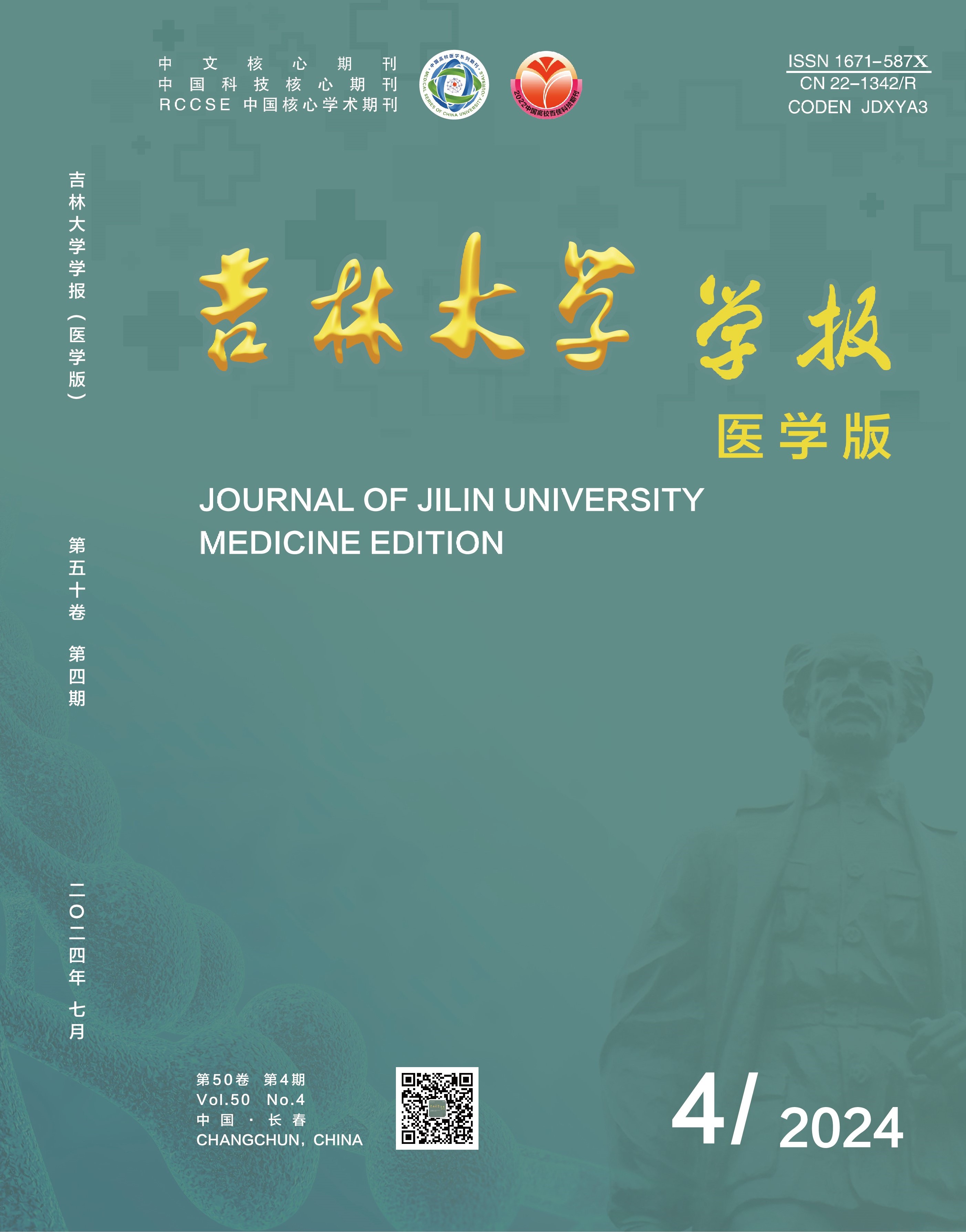|
|
Protective effect of Radix Salviae Miltiorrhizae Decoction on bronchopulmonary dysplasia in neonatal rats and its mechanism
BIAN Hongen, CHEN Tuanying
Journal of Jilin University(Medicine Edition). 2019, 45 (06):
1327-1333.
DOI: 10.13481/j.1671-587x.20190623
Objective: To observe the developmental situation of the lung of the neonatal rats with chronic bronchopulmonary dysplasia (BPD) after treated with Radix Salviae Miltiorrhizae Decoction,and to clarify the effect of Radix Salviae Miltiorrhizae Decoction on the BPD in the neonatal rats induced by high-volume fractinal oxygen(hyperoxia) and its mechanism. Methods: A total of 200 neonatal rats were divided into control group,model group,dexamethasone group,low and high doses of Radix Salviae Miltiorrhizae Decoction groups,and there were 40 rats in each group.Except for the rats in control group,the rats in the other four groups were induced by continuous inhalation of hyperoxia.The rats in dexamethasone group and Radix Salviae Miltiorrhizae Decoction group were treated with dexamethasone solutions (0.75 μg·kg-1) and 6.00 amd 24.00 mg·kg-1 Radix Salviae Miltiorrhizae Decoction,respectively,and the rats in control group were given the equal volume of normal saline.After 21 d of administration,the wet mass/dry mass (W/D) values of lung tissue of the rats in various groups were measured,the pathomorphology of lung tissue of the rats in various groups were observed by HE staining,and the number of radical alveolar counts (RAC) in lung tissue of the rats in various groups was calculated;the levels of malondialdehyde (MDA),superoxidedismutase (SOD) and glutathione peroxidase (GSH-Px) in lung tissue of the rats in various groups were detected,the levels of interleukin-1 (IL-1),interleukin-10(IL-10) and tumor necrosis factor-α(TNF-α) in lung tissue of the rats in various groups were determined by ELISA method,the expression levels of Bax,Bcl-2 and caspase-3 proteins in lung tissue of the rats in various groups were measured by Western blotting method. Results: Compared with control group,the W/D value of lung tissue of the rats in model group was increased significantly (t=3.144,P<0.05),and the obvious pulmonary edema was found.After 21 d of oxygen exposure,the lung tissue of the rats in model group was shown as enlarged alveolar cavity, simplified structure,and thickened interval,and the number of RAC was decreased significantly(t=3.989,P<0.05);the inflammatory cell infiltration and the levels of MDA,SOD,GSH-Px,IL-1β,and TNF-α and the expression levels of Bax and caspase-3 proteins in lung tissue of the rats in model group were increased significantly (t=6.562,t=1.971,t=1.972,t=20.241,t=32.808,t=22.663,t=19.234,P<0.05),and the level of IL-10 in lung tissue of the rats was decreased significantly (t=7.857,P<0.05).Compared with model group,the degrees of pulmonary edema of the rats in dexamethasone and Radix Salviae Miltiorrhizae Decoction groups were improved,and the W/D values of lung tissue were significantly decreased(t=1.018,t=2.691,t=0.760,P<0.05),and the alveolar structural disorder was alleviated; the levels of MDA,SOD,GSH-Px,IL-1,and TNF-α and the expression levels of Bax and caspase-3 proteins in lung tissue of the rats were decreased (t=6.562,t=1.971,t=1.972,t=20.241,t=32.808,t=22.663,t=19.234,P<0.05),the levels of IL-10 and the expression levels of Bcl-2 protein were increased(t=7.857,t=7.743,P<0.05),expecially in high dose of Radix Salviae Miltiorrhizae Decoction group. Conclusion: Radix Salviae Miltiorrhizae Decoction can effectively protect the bronchus and lung injuries induced by hyperoxia in the neonatal rats.
References |
Related Articles |
Metrics
|

 Table of Content
Table of Content
 Guide to Authors
Guide to Authors


